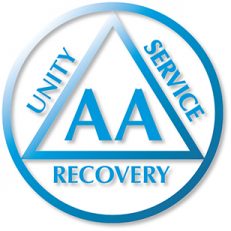The spark that was to flare into the first A.A. group was struck at Akron, Ohio, in June 1935, during a talk between a New York stockbroker and an Akron physician. Six months earlier, the broker had been relieved of his drink obsession by a sudden spiritual experience, following a meeting with an alcoholic friend who had been in contact with the Oxford Groups of that day. He had also been greatly helped by the late Dr. William D. Silkworth, a New York specialist in alcoholism who is now accounted no less than a medical saint by A.A. members, and whose story of the early days of our Society appears in the next pages. From this doctor, the broker had learned the grave nature of alcoholism. Though he could not accept all the tenets of the Oxford Groups, he was convinced of the need for moral inventory, confession of personality defects, restitution to those harmed, helpfulness to others, and the necessity of belief in and dependence upon God.
Prior to his journey to Akron, the broker had worked hard with many alcoholics on the theory that only an alcoholic could help an alcoholic, but he had succeeded only in keeping sober himself. The broker had gone to Akron on a business venture which had collapsed, leaving him greatly in fear that he might start drinking again. He suddenly realized that in order to save himself he must carry his message to another alcoholic. That alcoholic turned out to be the Akron physician.
This physician had repeatedly tried spiritual means to resolve his alcoholic dilemma but had failed. But when the broker gave him Dr. Silkworth’s description of alcoholism and its hopelessness, the physician began to pursue the spiritual remedy for his malady with a willingness he had never before been able to muster. He sobered, never to drink again up to the moment of his death in 1950. This seemed to prove that one alcoholic could affect another as no nonalcoholic could. It also indicated that strenuous work, one alcoholic with another, was vital to permanent recovery.
Hence the two men set to work almost frantically upon alcoholics arriving in the ward of the Akron City Hospital. Their very first case, a desperate one, recovered immediately and became A.A. number three. He never had another drink. This work at Akron continued through the summer of 1935. There were many failures, but there was an occasional heartening success. When the broker returned to New York in the fall of 1935, the first A.A. group had actually been formed, though no one realized it at the time.
A second small group promptly took shape at New York, to be followed in 1937 with the start of a third at Cleveland. Besides these, there were scattered alcoholics who had picked up the basic ideas in Akron or New York who were trying to form groups in other cities. By late 1937, the number of members having substantial sobriety time behind them was sufficient to convince the membership that a new light had entered the dark world of the alcoholic.
It was now time, the struggling groups thought, to place their message and unique experience before the world. This determination bore fruit in the spring of 1939 by the publication of this volume. The membership had then reached about 100 men and women. The fledgling society, which had been nameless, now began to be called Alcoholics Anonymous, from the title of its own book. The flying-blind period ended and A.A. entered a new phase of its pioneering time.
With the appearance of the new book a great deal began to happen. Dr. Harry Emerson Fosdick, the noted clergyman, reviewed it with approval. In the fall of 1939 Fulton Oursler, then editor of Liberty, printed a piece in his magazine, called “Alcoholics and God.” This brought a rush of 800 frantic inquiries into the little New York office which meanwhile had been established. Each inquiry was painstakingly answered; pamphlets and books were sent out. Businessmen, traveling out of existing groups, were referred to these prospective newcomers. New groups started up and it was found, to the astonishment of everyone, that A.A.’s message could be transmitted in the mail as well as by word of mouth. By the end of 1939 it was estimated that 800 alcoholics were on their way to recovery.
In the spring of 1940, John D. Rockefeller, Jr. gave a dinner for many of his friends to which he invited A.A. members to tell their stories. News of this got on the world wires; inquiries poured in again and many people went to the bookstores to get the book “Alcoholics Anonymous.’’ By March 1941 the membership had shot up to 2,000. Then Jack Alexander wrote a feature article in the Saturday Evening Post and placed such a compelling picture of A.A. before the general public that alcoholics in need of help really deluged us. By the close of 1941, A.A. numbered 8,000 members. The mushrooming process was in full swing. A.A. had become a national institution.
Reprinted from the Forward to the Second Edition – Alcoholics Anonymous, with permission of A.A. World Services, Inc.
